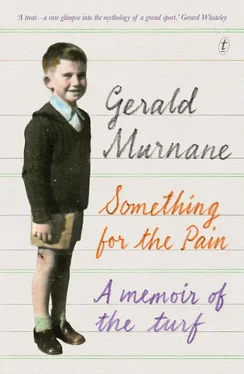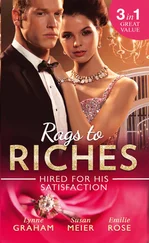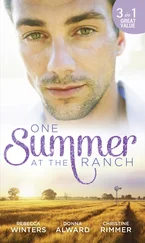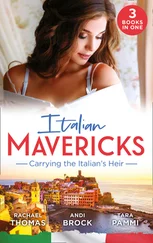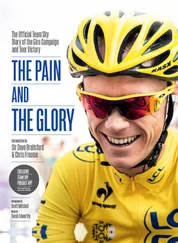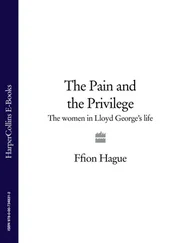Selecting my horse seemed easy enough. With hindsight, I understood that I should have been suspicious, but one horse seemed to stand above the others. This was the six-years-old gelding Elkayel. He had been placed in the Caulfield Cup, as had many Melbourne Cup winners during my lifetime. The other New Zealand horses had moderate form and, even allowing for the Enzedders’ noted cunning in these matters, I could not foresee any of the other horses improving sufficiently to beat Elkayel, whose trainer I’ve forgotten, but whose jockey was Grenville Hughes wearing a combination of green, blue, and yellow.
It seemed appropriate that my farewell bet should be a good-sized one. I took twenty pounds to Flemington on Cup Day to put on my selection. I got half my bet on at tens and half at twelves, so that I was set to win 220 pounds. I happen to recall that a new Volkswagen Beetle cost about a thousand pounds at the time; my winnings would have been a useful addition to our home-savings account. Those odds, by the way, made me a bit uneasy. They seemed to me twice what should have been on offer. If I had been setting the market, I would have had Elkayel favourite at six-to-one. Betting markets, however, just like other markets, are affected by supply and demand, and Elkayel was not greatly in demand. Had I been better informed, I might have noted the significant demand at long odds for another six-years-old New Zealand gelding. This was Polo Prince (Gold, emerald-green hooped sleeves and cap), which had run fairly in his lead-up races and close up in the Mackinnon Stakes without attracting my interest. I seem to have supposed that Polo Prince had been fully extended in all of those races, which is a supposition that should never have been hastily made about any horse from New Zealand in the years that I’m writing about. Maurice Cavanough, in his book The Melbourne Cup 1861–1982 , reports that Polo Prince firmed from twenty-to-one to twelve-to-one with leading bookmakers on the day before the Cup. Cavanough adds that the owner of Polo Prince later denied having put any money on his horse — but an Enzedder would say that, wouldn’t he?
Grenville Hughes was described as a leading New Zealand jockey, but I would have described his ride on Elkayel as incompetent. (That would have been my description during the days after the race. Later, when I had begun to entertain certain dark suspicions, I might have said that Hughes had ridden a perfectly judged race.) Hughes allowed Elkayel to drop to the rear of the field of twenty-six. At the far side of the course, halfway through the race, Elkayel was a hundred metres and more from the lead. Admittedly, the leader was a tearaway outsider, but I never expected my horse to win. Elkayel was still nearly last at the top of the straight. He then began to pass horse after horse with a strong run wide out, but I could still see that his task was impossible. While all this had been happening, Polo Prince had stayed near the lead. At the top of the straight, while Grenville Hughes was angling his horse, without any seeming haste, towards the outside of the field, Polo Prince dashed clear. He was still in front at the post, but Elkayel had got to his rump after having given him an impossible start.
That might have been the end of the story, and those might have been the only facts available for my pondering in all the years since, but a few months after the Cup I met at a social gathering a man who worked for a rails bookmaker. The man told me — not as though he was revealing some dark secret but as though he was repeating what was already common knowledge in the circles he mixed in — that yes, a great deal of money had been won at long odds on Polo Prince, and that the people who had won the most were what he called the Elkayel connections.
21. Summer Fair and Mrs Smith
FOR MANY YEARS, I read Time , the weekly newsmagazine, from cover to cover every week. I stopped when Time-Life, or whatever they called themselves, came up with an Australian edition. I could learn all I needed to know about Australia from newspapers or from magazines such as the Bulletin . What I had especially enjoyed in Time was the coverage of people and events far from Australia, but this was much reduced in the Australian magazine, and they lost my custom for good. But in earlier years, I read everything in Time : everything from reports of military coups in Togo or Equatorial Guinea to descriptions of new art galleries in Tucson or Baltimore or new trends among football cheerleaders in Austin or Green Bay. I mostly read the magazine when I was on trams or trains during the years when I preferred not to own a car. I was reading it one evening on a crowded suburban train in the early 1960s, when a sentence at the end of an article in the Books section brought on a fit of giggling. I was a man in my early twenties, but I had to cough and frown and bite my lip and to think of serious things so as not to make a fool of myself in the crowded compartment.
I had been reading a review of a book called The Bachelors . This work would have been the book-length equivalent of those articles that appear often in women’s or men’s magazines describing some or another emerging trend or some increasingly popular lifestyle. The author had filled chapter after chapter under such headings as ‘Bachelors and Interior Design’, ‘Bachelors and Sex’, ‘Bachelors Who Live Together’—that sort of thing. The reviewer had found the book interesting enough and had enlivened the review with some witty observations of his own. He had tried to end on a light note, and it was his last sentence that had set me off in the train. The sentence was roughly: One quirky custom unites all the many and varied sorts of men described in this book; all bachelors, it seems, urinate in sinks and washbasins .
I lived at the time in a tiny place that had been advertised as a flat but was really a single room with a gas ring and a stainless-steel sink concealed behind a door in the corner. I lived there during all of 1961 and part of 1962, and through all that time I urinated in the bowl of my kitchen sink, but there were mitigating circumstances.
My room was a converted back veranda behind a double-fronted solid-brick house that still stands today and is still numbered 50 in Wheatland Road, Malvern, near Tooronga Road. One wall was part of a rear wall of the house with the bricks painted over. The gas ring and sink were at one end of the room, at about the midpoint of the rear of the house. A small window was above the sink, but I kept the curtains drawn across it because it came close to making a right angle with a much larger window in the rear wall of the house. This large window, I guessed, was the kitchen window for the occupants of the house.
The occupants of the house were not the owners. The whole place belonged to Mr and Mrs Jakubowicz, a middle-aged couple who lived somewhere in Windsor and who called at Wheatland Road every Sunday morning to collect the rent from their tenants. They had told me from the first that the rent must be paid in cash, and I always obliged them, but Mrs Smith, co-tenant of the house with her husband, John, told me once of her attempt to offer Mrs Jakubowicz a cheque. According to Mrs Smith’s account, the landlady had gone all funny.
The landlords had three rents to collect every Sunday. In the backyard, not far from my covered-in veranda, was a tiny bungalow that served as a bedsitting room for the Ortlieb couple, a young husband and wife who had come to Australia as children of German migrants and talked often of going back to their homeland. They worked as cutters or machinists in a lingerie factory. The Ortlieb couple, unlike myself, had no gas ring or sink in their bungalow. Their kitchen occupied a third of another building, little better than a shed, at the rear of the backyard. The kitchen made up the central third of the shed, as I prefer to call it; one of the outer thirds was a bathroom and laundry that I shared with the Ortliebs. They and I shared also the other of the outer thirds of the shed. This third was a toilet, clean and serviceable but separated by only a weatherboard wall from the Ortliebs’ kitchen. Sometimes, of a Sunday morning, when I was taking my week’s washing towards the laundry, I would see the Ortliebs still at the breakfast table in their tiny kitchen but would not hesitate to fill the washing machine and set it going. Sometimes I showered while the Ortliebs were on the other side of the wall. Never, during the year and more while I lived in Wheatland Road, did I go into the toilet while the Ortliebs were in their kitchen on the other side of the weatherboards. I somehow managed to regulate my bowels so that they never needed to be relieved during the Ortliebs’ mealtimes. As for my bladder, I relieved it as often as needed — in my sink beneath my little curtained window, making sure always to run the tap at the same time and for some time afterwards.
Читать дальше
